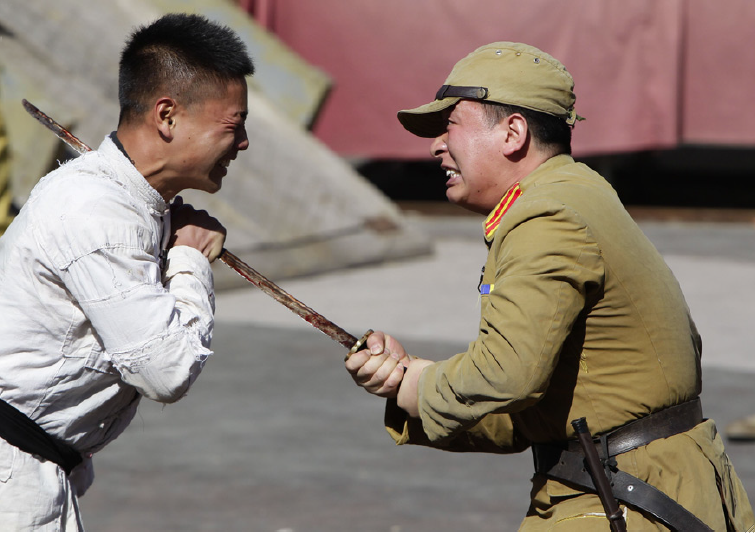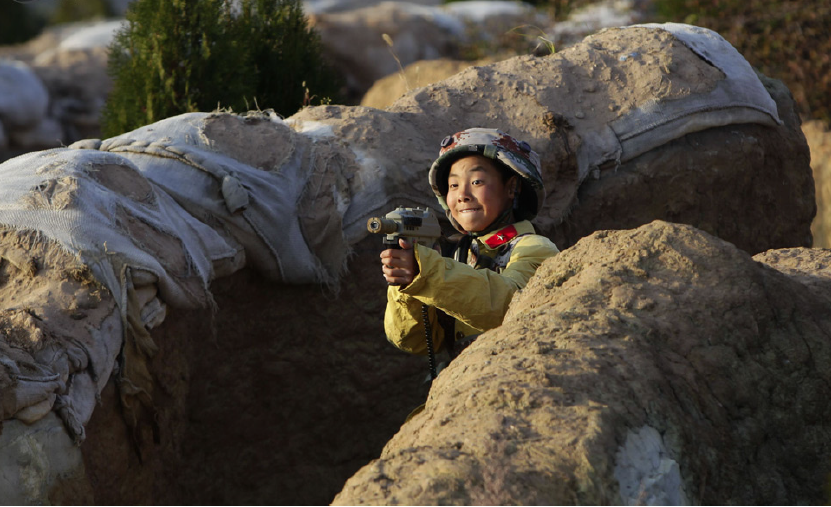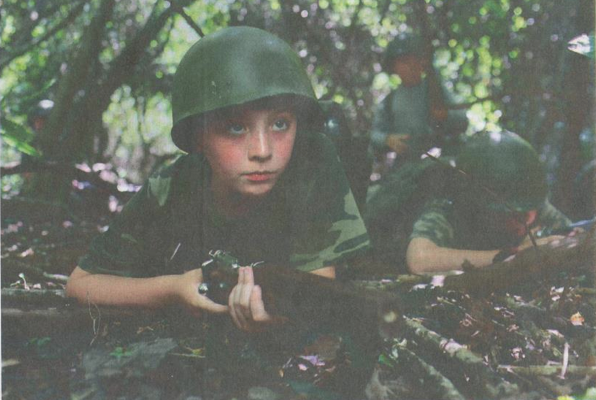At first glance, the photograph is an excruciating example of what Barbie Zelizer refers to as an “about to die” photograph, but a quick read of the caption notes that it is an actor dressed in a Japanese military uniform as he “pretends to kill a man dressed as a plainclothes 8th Route Army soldier.” The performance is taking place at an Army Culture Park in Wuxiang county, part of China’s Shanxi Province. I might have treated the image as little more than a curiosity but for the fact that I encountered it on several different slide shows, often accompanied with other photographs, such as the one below, showing adolescents and teenagers role playing Chinese soldiers in war game simulations at what is described as a “guerilla warfare experiential park.”
One might wonder why the Chinese are promoting a theme park that offers a “guerilla war experience,” but the question here is, why are we seeing such images and in such profusion? And why now? And without any extended commentary? China is of course one of America’s premiere competitors for world power, and so there is all manner of curiosity about who they are and what they are doing. Many of the images that we see of China these days call attention to the ways in which their economic and technological progress stands as a threat to global capitalism or they underscore the Chinese government’s efforts at political oppression and their potential military strength. The photographs of professional actors and children role playing as soldiers—both past and present—at the Army Culture Park operate at the nexus of these concerns as we see a military culture being advanced for what appears to be China’s middle classes through a theme park experience that converts war into play. While the actors have a serious countenance—as commensurate with their roles—everyone else seems to be having a good time. And the presumed and potential threat to the western world—both economic and military—could not be more palpable as we watch children who might grow up to be our enemies enjoying the experience (both economically and militarily).
Before we feel too superior in judging the Chinese, however, we need to look more carefully within, for a simple search on “children” and “war games” in the United States brought up a reference to the Virginia War Museum in Newport News, VA, an “incredible, safe, and fun experience for children, 8-12” with both summer and winter World War II Youth camps (here and here).
And perhaps the question should be, what’s the difference? Or, of what should we really be afraid?
Photo Credits: Jason Lee/Reuters; Ross Taylor/Virginia Pilot



Isn’t paintball a national phenomenon in the US that is really much the same? I’ve never done it, but from what I see there are small to large shooting galleries across the country where teens and above can play out their soldier’s dreams without risk to life, limb, or psyche. Paintball weapons can cost much more than “real” weapons and from “armor” to camo gear paintball has become a many million dollar industry.
David: Yes, of course. And we have actually commented on that phenomenon at NCN in the past:
http://www.nocaptionneeded.com/2007/10/playing-soldier/